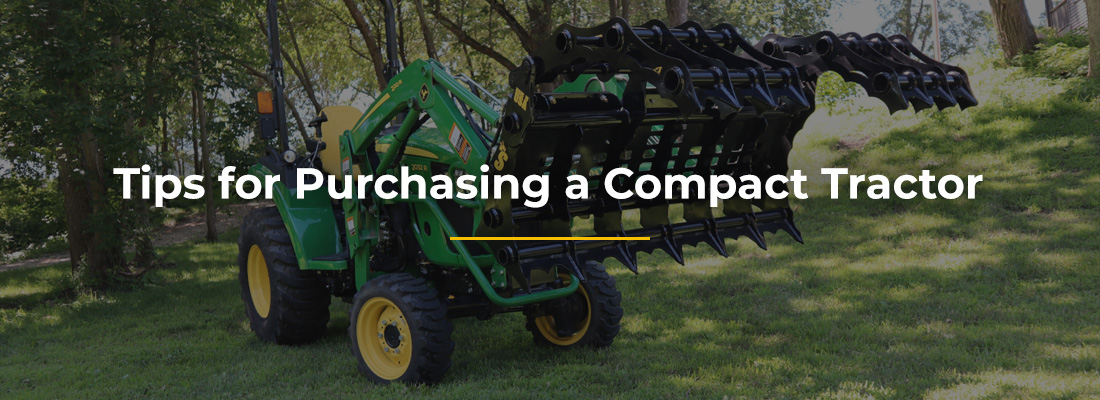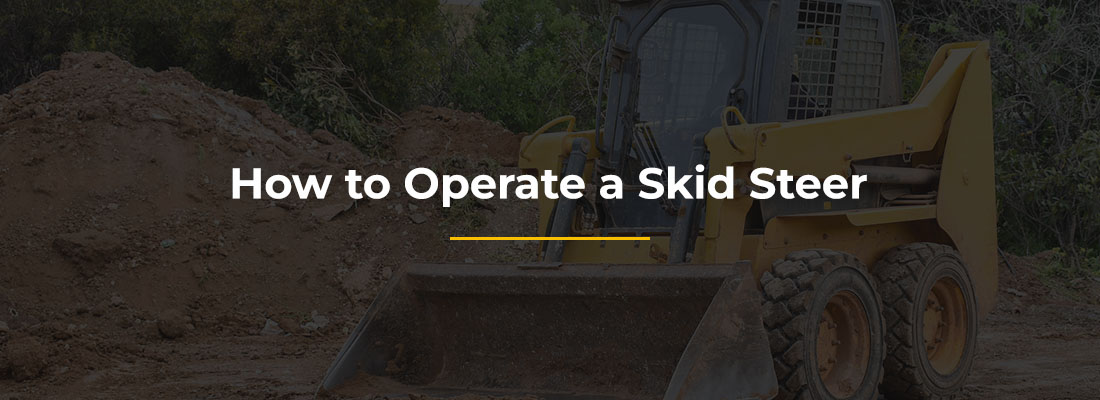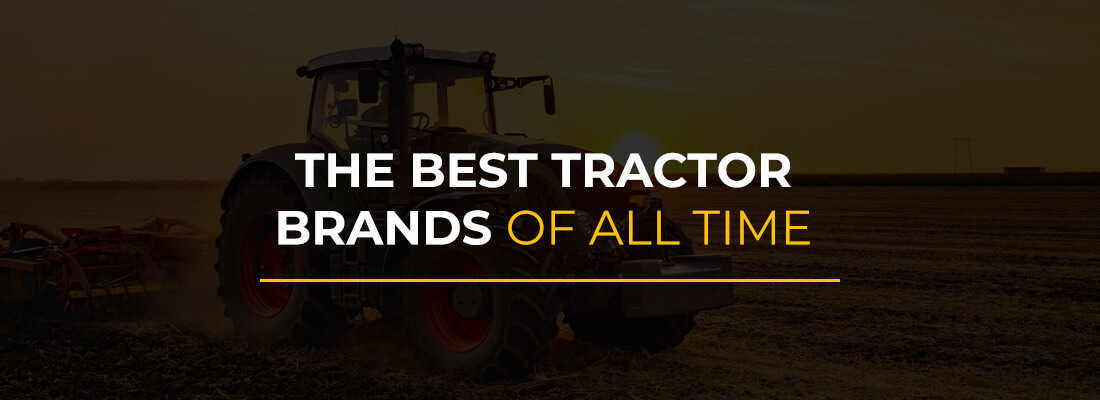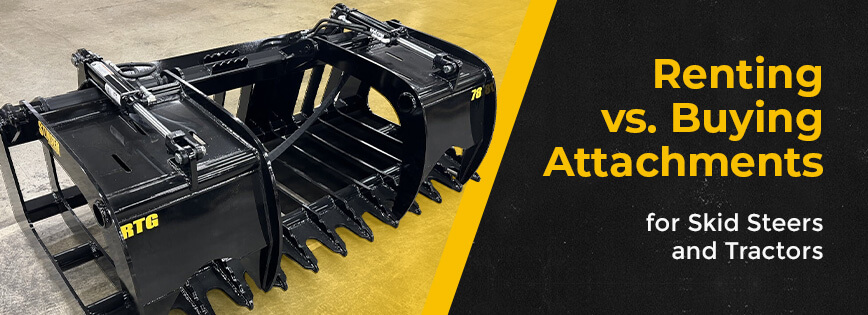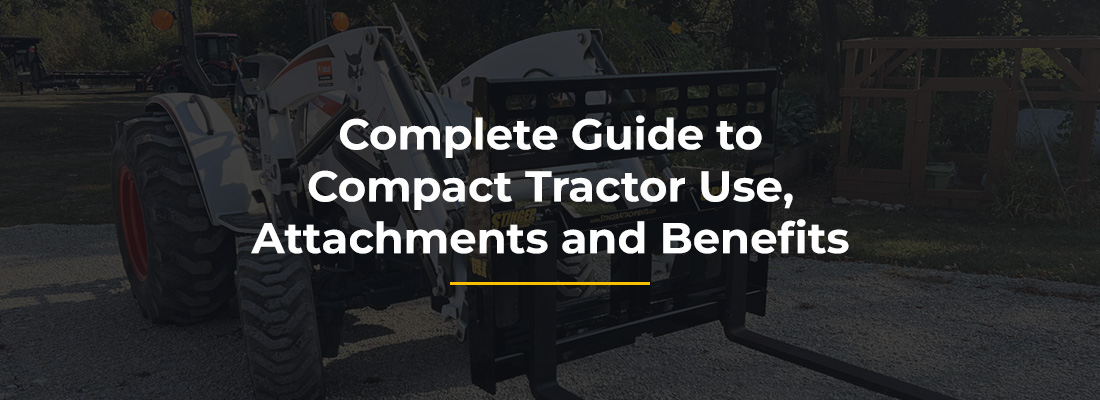Tractor Operating Tips for Beginners
Modern tractors offer the power and strength needed to operate in today’s agricultural, construction and landscaping industries. To a beginner, operating one can seem overwhelming — even when it comes to compact or small tractors. However, by understanding the key features of this essential equipment and getting plenty of practice driving, you’ll have a handle on it in no time.
Common Tractor Features
Tractors are powerful machines that can pose risks without proper training and knowledge of each part. Knowing the different features can help you operate tractors safely and reduce the chance of accidents or injuries. It also helps you maximize productivity and avoid unnecessary wear and tear on the equipment.
- Engine: The engine is the heart of the tractor, responsible for powering the vehicle and driving many parts. In general, the engine helps the tractor move, producing energy by burning fuel and converting it into rotational motion. The engine is typically located at the front of the tractor, under the bonnet or hood.
- Transmission: The transmission is how you move the gears to get the equipment in motion and generate power for specific tasks. In many cases, the transmission can work like a stick shift and clutch in a car.
- Implements: Tractor implements, or attachments, are a collection of tools you can attach to your tractor for specific tasks. Implements might handle multiple functions, such as digging, sowing, plowing, cultivating or seeding.
- Hydraulics: A tractor’s hydraulic system is responsible for transmitting and controlling the power of attachments, including loaders, backhoes and hydraulic lifts. It uses fluid pressure to generate force and motion and is connected to the engine, while hydraulic cylinders and valves are placed throughout the tractor.
- Power take-off (PTO): The PTO is usually found at the back of the tractor. It transfers power from the engine to the attachments or implements while you drive. Typically, all modern tractors come with this feature. You’ll want to know how long the PTO on your machine can run continuously, as this factor can limit the type of work you can do.
- Control levers: Control levers help you manage the movements of your machinery and its implements. You operate these with your hands or feet, connected to the systems they control, including speed, direction and implement operation. The levers are within the operator’s reach, typically on the driver’s side of the tractor in the control panel, near the steering wheel or on the floorboard.
Tips for Starting and Operating Your Tractor
Now that you know how some of the key features work, the next thing to do is start up your tractor and get driving.
1. Adjust the Seat
Before starting up your tractor, sit in the operator’s seat and adjust it so that you can comfortably reach all controls.
Take your time to find the perfect arrangement. When you’re seated comfortably and within range of each control, you can operate the tractor more safely.
When you’re seated comfortably and within range of each control, you can operate the tractor more safely.
2. Check Your Controls
Fasten your seatbelt and place your gear shift and hydraulic controls in neutral.
3. Start the Tractor
Next, engage the PTO, depress the clutch and turn the key on your tractor. When the engine turns over, put the tractor in gear with the clutch still depressed.
Press down slowly on the accelerator while gently releasing the clutch.
For beginners, having an open and level space is the best place to learn how to operate a tractor. You can make wider turns, and you aren’t at risk of running into obstacles as you pickup the controls. Practice by taking a lap around the space to get a feel for the tractor’s controls and operations.
4. Follow Recommended Speeds
When operating your tractor, adhere to the recommended speeds. If you drive too quickly, you risk losing control, which can lead to an accident. Be cautious on slopes and maintain a safe speed. Approach turns and direction changes with caution to prevent rollovers and injuries.
5. Avoid Overloading
Tractor overloading can shorten the life span of your tires. Transporting tools or loads that are heavier than the manufacturer’s recommendations can cause premature wear and tear or even damage them to the point of needing to replace them. Check the maximum load capacity on your tires, and avoid adding anything to the tractor that exceeds that number.
6. Be Observant and Alert
It’s crucial to stay focused and aware of your surroundings when operating your tractor. That way, you can anticipate and prevent potential hazards. Watch for obstacles, pedestrians and other vehicles when operating your tractor.
Remember to check your mirrors and use rearview cameras or proximity sensors if available. These visual aids can help you maintain awareness of your surroundings and potential obstacles.
7. Use Smooth Movements
When driving the tractor, make deliberate and smooth movements when steering or using the throttle, clutch or brakes. Abrupt movements can make it challenging to maneuver the equipment precisely.
8. Safely Stop and Follow Shutdown Procedures
When using a modern tractor with advanced transmissions, you can shut the engine off by taking your foot off the acceleration pedal and turning the key. If the tractor requires you to shift gears manually, you’ll need to depress the clutch, shift to neutral and let off the clutch as you depress the brake.
While you might feel tempted to jump to advanced features, start slow and get plenty of practice driving your tractor. Build your skills gradually. The more time you put in, the better you will understand the potential of what a tractor can do for your operations.
How to Attach and Detach Implements
When using implements, such as plows, cultivators or mowers, follow these steps to attach and detach them from your tractor:

- Read the manual: Before attempting or detaching implements, read through the manual. Get acquainted with the specific instructions for the tractor model and implement.
- Prepare the tractor: Ensure your tractor is parked on level ground and turn the engine off. Engage the parking brake and lower the hydraulic systems to relieve pressure. Disconnect the PTO and other connections before attaching the implement.
- Align the tractor and implement: Make sure you align your tractor with the implement and hitching system. Common ones include three-point hitches, drawbars or quick-attachment systems. Follow the manual to correctly position the tractor.
- Connect the hitch: Next, follow your manual to correctly connect the hitching system to the tractor. You might lower the implement, align pins or adjust lop links or stabilizers depending on the tractor model and type of attachment. Make sure the hitch is secure and in place by shaking the implement and checking for signs of instability or movement. Make sure all safety features are engaged.
- Detach the implement: To detach the implement, reverse the process. Ensure the tractor is parked on level ground, disengage the connections and follow your manufacturer’s instructions.
It’s crucial that you follow these steps closely and keep your implement securely attached. A secure and stable attachment will prevent accidents and injuries that come with handling heavy machinery.
Tractor Operation Safety Tips
Following certain safety procedures when operating a tractor can prevent common tractor accidents like rollovers and collisions. You’ll want to have proper training and knowledge of your tractor’s components, operate the machinery with caution and follow the manual to safely attach and detach implements.
The following are some safety tips to help you operate your tractor:
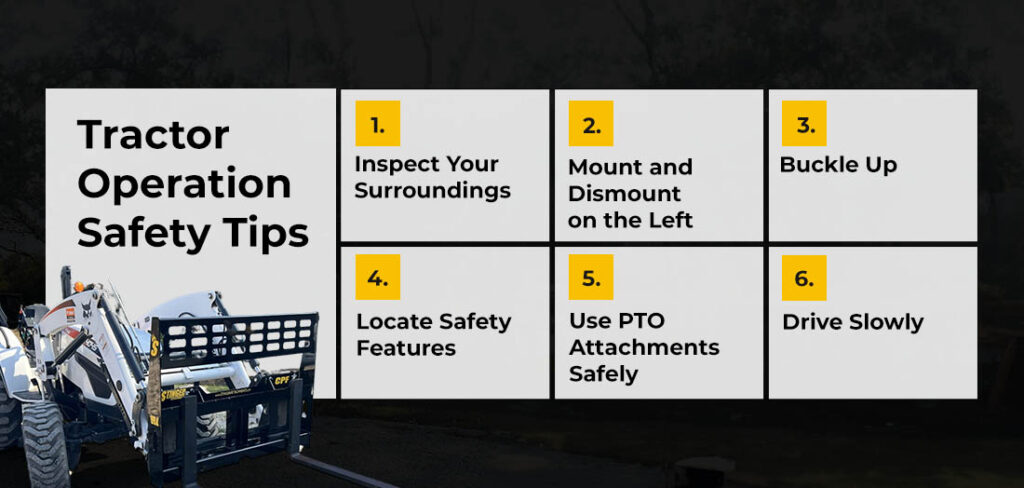
1. Inspect Your Surroundings
Before you sit in the operator’s seat, check your surroundings. Examine the front and back of the tractor and under the equipment to ensure no obstacles could lead to accidents. You should also only start the tractor on flat or level ground.
Additionally, ensure there are no bystanders close by and the wheels are free and not frozen or stuck to the ground. You should also inspect the machinery for any loose parts or objects, such as tools on platforms or around the control levers.
2. Mount and Dismount on the Left
When getting into the tractor’s operator seat, always mount on the left side to avoid the controls. Adjust your seat so you can comfortably and safely reach the controls and keep safety guards in place, including the PTO.
Operate the self-starter from the operator position only and never mount or dismount when the tractor is moving. Keep your parking brake on and make sure it is operating effectively before dismounting.
3. Buckle Up
Just like driving a car, securely fasten your seatbelt before driving. It’s always important to wear the seatbelt, but doing so is especially crucial if you’re operating on difficult terrain. A seatbelt also keeps you in a safe position should the tractor tip.
4. Locate Safety Features
To prevent a dangerous situation, you should know where your tractor’s safety features are located. For example, you’ll need to read the manual to determine where the kill switch is located. This part helps you stop the machine immediately in case of an emergency.
4. Use PTO Attachments Safely
Always follow the proper procedures when attaching, detaching or using any implements or attachments. Be cautious when engaging or disengaging the power take-off (PTO) and make sure all guards on towed implements are in place before using them. Never adjust or work on the attachments when they are in motion — only attach them when the PTO shaft is guarded. Additionally, avoid hitching the attachments above the center line of the rear axle.
5. Drive Slowly
When operating your tractor, drive at speeds slow enough to maintain control over any unexpected obstacles or hazards. You should reduce your speed before turning and applying the brakes, and watch out for ditches, rocks or embankments.
It’s also crucial to engage the clutch gently, especially when driving uphill or towing. Descend slopes in low gear, using the motor as a brake.
Tractor Maintenance and Storage Tips
You’ll want to conduct regular maintenance tasks to keep your tractor in good working condition. Be aware of fluid levels, clean your filters and inspect the belts and tires regularly. It’s also important to store your tractor properly, including keeping it out of the elements and securely parking it to prevent accidents.
To keep your tractor in optimal condition, regularly inspect and service these parts:
- Tires: Ensure your tractor tires are properly inflated and free of visible damage like cuts or excessive wear. Operating the tractor with damaged tires can lead to tire blowouts or loss of traction, which puts you at risk of injury and accidents.
- Lights: Inspect your tractor’s lights, including the headlights, taillights and brake lights, hazard lights, batteries, and electrical system. Properly functioning lights enhance visibility and help you reduce the risk of accidents.
- Fluids: Checking the fluids before operating a tractor is crucial to make sure the machine will operate properly. Prior to starting it, remove the dipstick and wipe it clean to ensure the engine, hydraulic and transmission oils are high enough.
- Belts: You should also inspect your tractor’s belts before operating the equipment, as these parts are crucial for power transmission, preventing equipment failures and ensuring it runs properly. When inspecting the belts, typically located near the engine compartment, look for signs of damage. Also, ensure they aren’t too loose or have too much slack. Observe the alignment, and make sure the belts run parallel to the pulleys without touching the sides.
- Filters: The tractor filters are usually located near the engine compartment. Before starting the machine, check that the air, oil and fuel filters are clean and functional, as they contribute to the engine’s overall performance. Replace the filters if you notice excess dirt, debris or damage.
If you notice any defects during the inspection, ensure that you correct them immediately. These can impact your safety and the equipment’s performance. Before servicing or refueling your equipment, remember to park on a level surface and let the engine cool to prevent an accident or injury.

Explore High-Quality Tractor Products at Stinger Attachments
You should always follow safe tractor operation and maintenance steps when handling this essential equipment. While it might seem daunting in the beginning, operating your tractor will become much easier with time and practice.
When you need high-quality implements for your machinery, look no further than Stinger Attachments. With years of experience in metal manufacturing, we have mastered the fabrication process, offering superior products, quick turnarounds and competitive prices.
Our products include compact, utility and skid steer attachments to help you complete your unique task. Whether you’re in the farming or construction business, we have the tools you need to help you succeed. To find the right attachments for your job, call our tractor experts at 507-273-7497 or fill out our contact form today.


